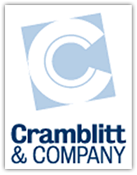PR in practice: You’re full of it
August 31st, 2009 | 4 Comments
Marketing and PR people say a lot of stuff that they don’t really believe. Or, that they’ve convinced themselves is true. And when it gets into the public’s hands, it invariably rings false.
How often do you see a press release or marketing piece that describes a technology product as “robust,” “intuitive,” “flexible,” or “setting a new paradigm?” Or a corporate announcement larded with exec-speak that obscures any meaning and annoys the average person?
Here’s a little exercise the next time you’re working on a press release, marketing brochure or corporate speech: Make believe you’re talking to your most cynical friend. The friend who brings you thudding to earth when you get too grandiose or preachy. The friend who has no compunction about telling you that you’re full of it. Now write something that this friend can swallow and digest — possibly even enjoy.
You have little to lose but your pretension.

